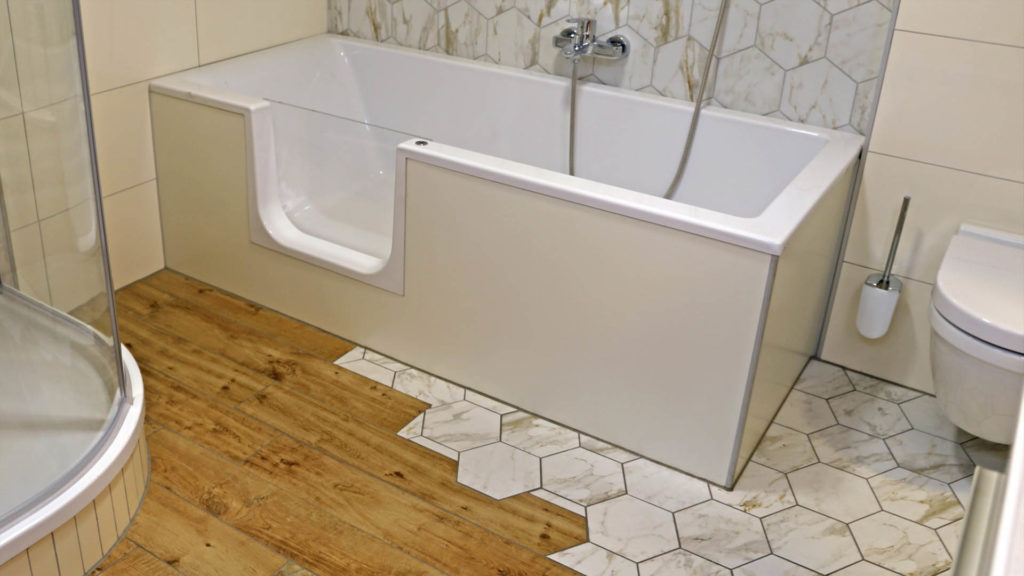
What Is Aging in Place and How Is It Beneficial?

Aging in place is the concept of staying in one’s own home as one ages. Over time, many changes accompany retirement age, both positive and negative. On the one hand, people naturally become more comfortable with familiarity and routines. Aging in place makes it easier to adjust to the changes that come with aging, such as reduced mobility or declining health.
On the other hand, sudden changes like moving into an assisted living facility can be a big shock to the system. For many older adults, having strangers coming in and out of their homes daily can feel unsettling. By contrast, aging in place allows older adults to maintain their independence while still receiving support from caregivers like family members or healthcare workers. This can help them avoid the stress and anxiety associated with new surroundings or unfamiliar people.
According to an AARP survey, three out of four adults over the age of 50 want to live in their current homes and communities as they age. Many said they would modify their homes to make aging in place possible, including adding grab bars in the bathroom or a ramp outside. Therefore the movement to support aging in place is gaining traction as more and more people recognize its benefits.
How Does Aging in Place Differ From Nursing Home Care?
The main differences between aging in place and nursing home care are the level of support provided and the independence allowed. Nursing home care is a more comprehensive form of care that includes around-the-clock medical support and supervision. This type of care is typically necessary for people with severe health conditions or complex needs.
Aging in place allows seniors to age at home with the support of family, friends, and caregivers. This way, they can handle most of their needs independently while still getting help with things like cooking, cleaning, and transportation — not to mention handling personal needs such as online therapy or telehealth.
This is the preferred option for many people as it allows them to maintain a sense of autonomy and control over their lives. It also allows them to stay in their own homes, which can be a great source of comfort as they age.
Why Is Aging in Place Important?
Aging in place is an essential concept for many reasons. First and foremost, it provides seniors with a sense of comfort and familiarity, promoting greater well-being. As people get older, they often value predictability and continuity, and staying in one’s own home best allows them to preserve these things. Additionally, maintaining a familiar space helps to minimize the stress that often comes with moving or making major life changes.
Aging in place also provides great flexibility for family caregivers. By being around for caregiving, family members can also be more involved in making decisions about treatment plans or taking on chores like grocery shopping and housekeeping. Meanwhile, older adults and their family members alike get to enjoy the benefits of social connections associated with this caregiving.
How To Age in Place at Home
There are a few key things that you can do to age in place successfully. First, it’s essential to be proactive about your health, including eating a balanced diet, staying active, and getting regular check-ups.
Additionally, you’ll want to create a support network of family and friends who can help you with caregiving tasks like transportation, groceries, and light housekeeping. You should also keep a list of emergency contacts for these loved ones in case of any unforeseen issues.
Finally, staying active and engaged in your community is a good idea. This can help you maintain a strong social network, which is essential for both your mental and physical health. There are many ways to stay active, such as joining a senior center or participating in local activities.
Does Aging in Place Require Remodeling?
Depending on your mobility and physical ability, you may need to make some accessibility upgrades to your home to age in place successfully and safely. This might include:
- Installing a wheelchair ramp.
- Installing an easily accessible bathtub.
- Adding handrails in the bathroom or around the house.
- Widening doorways to accommodate walkers or scooters.
These changes can help you maintain independence and live comfortably at home as you age. Beyond simple changes such as these, you may also want to consider more significant renovations, such as adding an elevator or expanding your living space.
Of course, any major changes should be discussed with your family and caregivers to ensure that they are feasible and affordable. Ultimately, the goal is to make your home a safe and comfortable place to live.
Mental Health Benefits of Aging in Place
Aging in place has been shown to have several mental health benefits. However, it isn’t a standalone concept. In an AARP report, aging in place was found to be most successful when it was combined with other programs, such as liveable communities and services, such as those that provide social interaction, education, and support. While aging in place isn’t the same as these programs, the research shows that they share many of the same benefits.
In other words, while aging in place can be a great way to maintain your independence, staying socially connected and engaged in your community is also important. This combination of factors has improved mental health outcomes for older adults such as:
- Increased life satisfaction: Many people feel happier and more content with familiar routines and surroundings.
- Greater self-esteem: By functioning without depending on others, many people feel a sense of accomplishment and greater self-worth.
- Reduced anxiety and depression: Many people feel calmer and less anxious with a stable and comfortable living situation.
- Better cognitive function: With a stimulating environment, people are more likely to engage in activities that keep their minds sharp.
Additionally, with a happier mental state, it’s easier to maintain a healthier lifestyle overall. Not to mention that the community around them benefits when aging in place is supported. Everyone can benefit when older adults stay in their homes and are active in the community as they age.
If you’re considering aging in place, talk to your family and doctor to create a plan that’s right for you.


